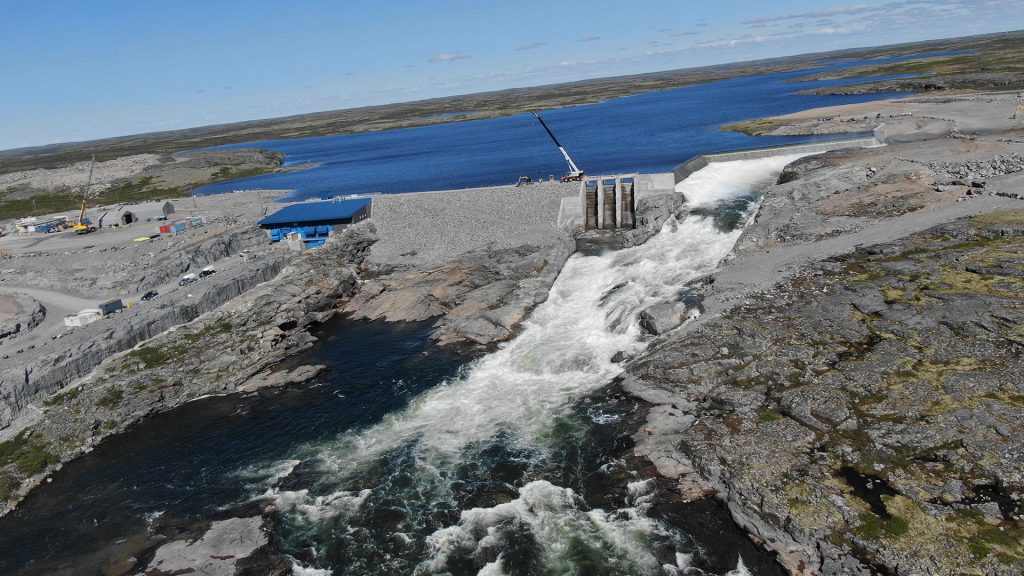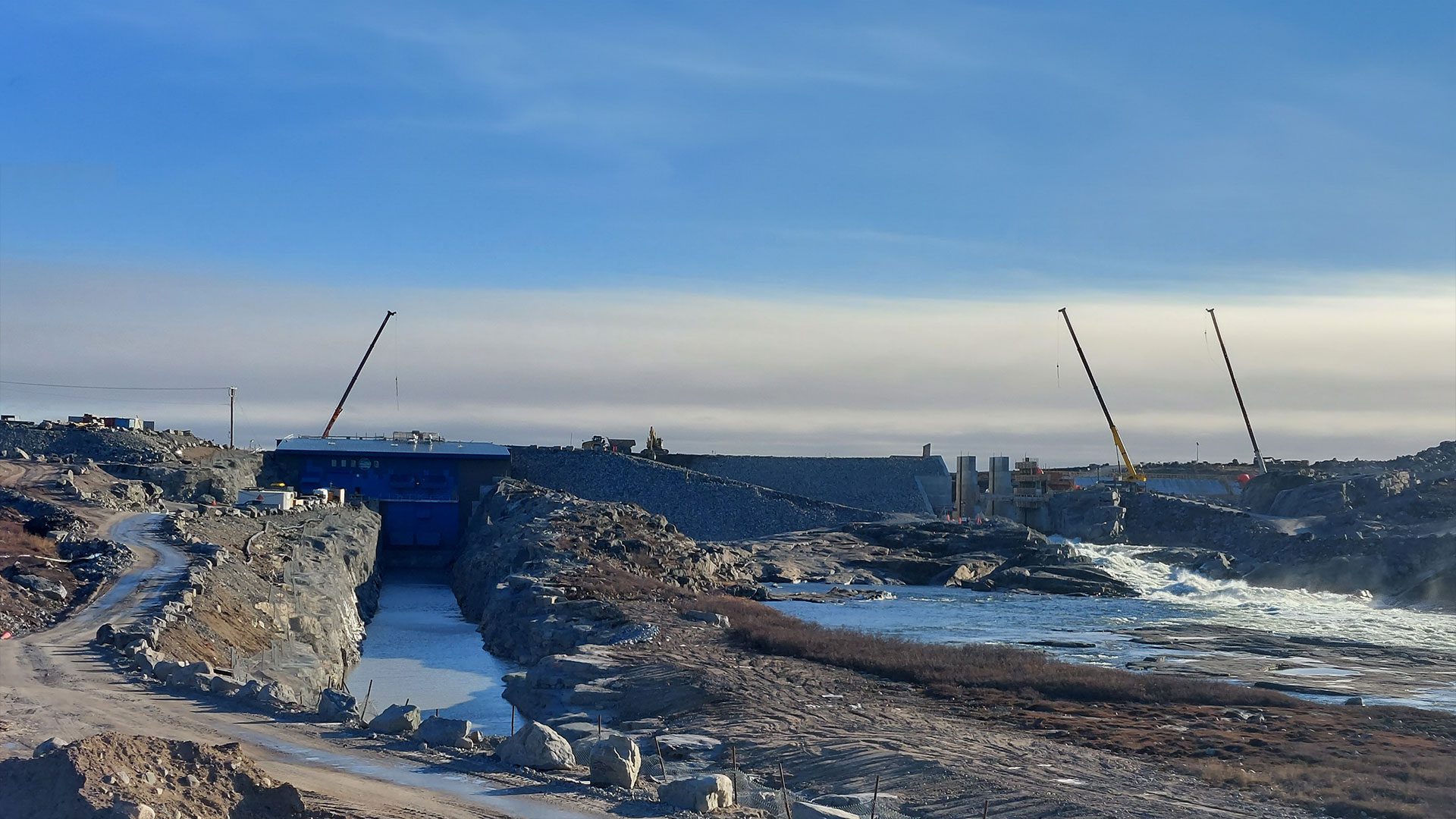
Photo: Supplied by Eric Atagotaaluk, the director of the Pituvik Landholding Corporation. 2023.
In Inukjuak, an Inuit community on the shoreline of the Hudson Bay in Northern Quebec, a hydro project is about to go live that leaders hope will reduce dependency on diesel and bring tens of millions of dollars into the community. The project is called Innavik Hydro.
The word ‘Innavik’ means “a pocket inside which a flint stone and moss are kept to light a fire” in Inuktitut.
“This is a huge project for our community. We are a small community of about 2,000… this project is owned by a community corporation which we are very proud of,” said Eric Atagotaaluk, the director of the Pituvik Landholding Corporation.
Chris Henderson, the founding executive director for Indigenous Clean Energy, has worked on an advisor to this project. He told APTN News that energy independence is important to remote communities.
“[The project] has taken over a decade to develop but it reduces all the diesel for both power and heat in the community. It will actually reduce more greenhouse gas emissions per capita than any single community in Canada, ever,” said Henderson.
The Pitusvik Landholding Corporation — that is responsible for land and development — worked with Hydro-Québec and Montreal-based renewable energy company Innergex to create clean energy to households in the isolated northern community.
Once the hydro project is online, 80 per cent of the community’s power needs are expected to be met by hydro power.
From feasibility study to reality
In 2007, the community initiated a feasibility study, led by a corporation comprised of community members.
“The feasibility study was completed in 2010 and then we presented the findings to our community members and held a community referendum,” said Atagotaaluk.
According to Atagotaaluk, 83 per cent of the community voted in favour of the project.
Construction began in 2020 and is now a few weeks away from launching in 2023.
The project costs were $125 million including development costs. The construction cost on the new hydro project are around $92 million, according to Atagotaaluk.

Community concerns about hydro development
The project is a “run-of-river power plant,” which uses the steady flow of water to spin energy turbines. Unlike traditional hydro dams, water is not stored but returned into the river. So it does not flood fields like hydro dam projects that were previously built. Diesel generators will stay in place as a backup source of electricity.
“There were many concerns [about the impact] on the environment and it’s surroundings,” said Atagotaaluk. “An environment impact assessment was conducted, which was mandatory, required by the provincial government. Studies were conducted if the migratory patterns of the caribou would be impacted. As well as what type of plants were present around the area as well, had to be filed in the environmental assessment.”
The Kativik Environmental Quality Commission (KEQC) analysed the project’s environmental assessment. When it approved the project it was with several conditions including monitoring water quality and mercury levels as the project was developed.
At community meetings, KEQC heard from people who were concerned about the effect that the new development would have on animals, and therefore hunting in the area.
Young people also expressed their disappointment at not having a chance to comment as the initial vote to accept the project was over ten years ago.
The assessment also determined no animals with special status were within the project area and that the contractors would need to use existing infrastructure, roads and to minimize the impact to the surrounding wetlands.
Other conditions were including a plan to maximize local employment, and the requirement that there must be a report every five years that shares information about community reinvestment,
The project also looked a whether nesting areas close to the project site for peregrine falcons would be affected, and did water quality monitoring during construction of the project.
“Fish profiling was conducted in 2018 before the construction of the project started and the fish population will continue to be monitored for the next 15 years, post construction,” said Atagotaaluk.
Economic empowerment and community investment
According to Atagotaaluk, the hydro project will curtail greenhouse gas emissions by 700 tons over the next four decades.
The local housing corporation is also set to benefit from an anticipated 20 per cent reduction in heating costs for residential units by switching from diesel to electric.
Another benefit to local ownership is that this project can also create reinvestment into Inukjuak.
Fifty per cent of the revenue generated will be reinvested into the community, thereby funding a variety of essential programs.
“This project will allow our community to earn up to $90 million over the next 40 years. This is something that we’ve never had since our community was created in the 1970s,” said Atagotaaluk.
Reducing diesel dependency
Atagotaaluk said that the project reaches beyond electricity, aiming to replace diesel heating with electrical heating in most residential units and 80 per cent of the community’s infrastructure. This, in turn, will substantially reduce the community’s carbon footprint.
Proponents of clean energy like Henderson have said that this provides for independence for remote communities.
“Energy sovereignty, to me is that your community is sitting at the table to make the decisions about how you use energy and how you use energy for what you need,” said Henderson.
Adapting to climate change
In the Arctic region hunters and community members have experienced dramatic changes to their way of life.
Shifting seasons, earlier springs, and unpredictable weather patterns have made traditional hunting and fishing a daunting challenge.
“It is becoming harder and harder to go out fishing and hunting because it is more dangerous…we have lost a good few hunters in the past ten years from sudden changes in weather,” said Atagotaaluk.
Unfortunately, technology to help people communicate in this situation is often too expensive for members of the community.
“Despite all the technology available out there now like satellite phones, GPS…not everyone can afford all those devices,” said Atagotaaluk.










